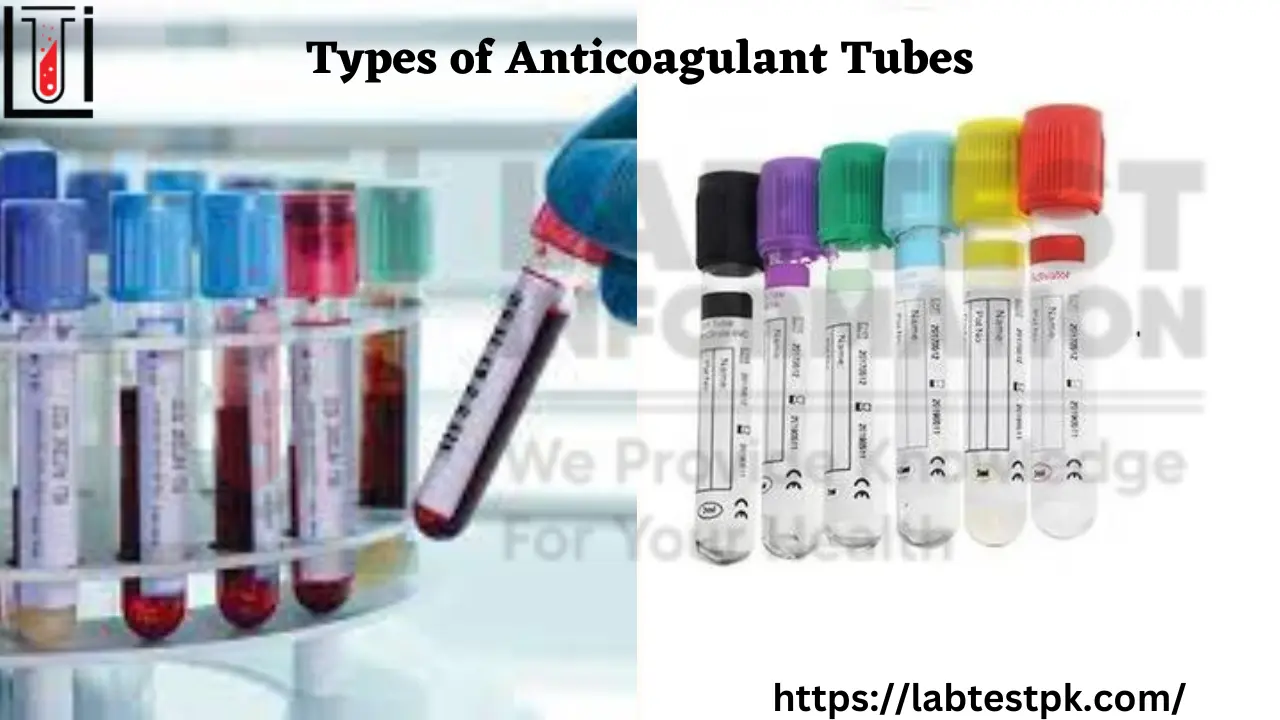Types of Anticoagulant Tubes
Types of Anticoagulant Tubes, Remember that these tubes contain an indication mark which means that blood should be taken up to that mark because the ratio of blood and anticoagulant can be disturbing and might cause problems in lab results.
Blue Top Tube:
This tube contains sodium citrate Anticoagulant. This tube is used Primarily in coagulation studies for (PT and APTT), TT, and D-Dimmer tests. Remember in the blue top tube you will take blood up to the mark exactly otherwise result will be not accurate, So complete filling of this tube up to the mark provided is essential to obtain accurate results.
Lavender Top Tube:
The second tube is a lavender top tube. It is also called an EDTA tube or purple top tube and is mostly used for hematology procedures EDTA removes calcium from the blood and the blood in this tube will never clot. It is an anticoagulant tube. Its Primary use is for the CBC and individual components of the CBC. This tube is used for complete blood count tests, Retic Count G6PD tests, HB, RBC tests, and Hb electrophoresis. The large 6 ml tube is used for blood bank Procedures.
Red Top Tube:
The third tube is the Red Top tube. This tube has no anticoagulant and is used for many routine chemistry tests, Drug levels, blood bank procedures, special chemistry, and serological tests.
Green Top Tube:
Green Top Tube, In this tube lithium heparin a Sodium heparin anticoagulant is Present. This tube is used for Serological tests. Routine chemistry tests, special chemistry, and especially for blood gases.
Grey Top Tube:
In this tube, Potassium oxalate is present which is. Primarily used for glucose tolerance tests and routine sugar tests because it Preserves sugar for a long time.
Yellow Top Tube:
This tube contains Acid citrate Dextrose is an anticoagulant and this tube is used for the collection of whole blood for special studies like tissue typing of HLA typing in which Antigens are checked in donors and recipient cells surfaces for Compatibility before tissue & organ transplantation.
Black Top Tube:
This tube contains Sodium citrate as an anticoagulant and it is used for the determination of the Erythrocyte Sedimentation rate.
Gel Tube:
This tube is with inert clot activator determinations that require serum in chemistry Infectious disease testing, also used for serological tests, Routine chemistry, and special chemistry tests. This test tube is best for the transport of blood from one place to another when blood is centrifuged in this tube and the gel makes a barrier between red blood cells and serum. It can easily transport this sample in this tube.
Blood Culture Bottle:
It’s the detection of Circulating microorganisms in bacteremia and Spedaemia. It contains the brain, heart invasion, and this glycollate broth. The long culture bottles are made for the batch system which is an automated machine for blood culture tests and the Small Bottle is for manual blood culture.


[…] Heavy turbidity with light flocculation. 3+: […]
[…] not shake the tube too vigorously to mix the anticoagulant, but mix carefully and […]
[…] that the name “lupus anticoagulant” can be confusing, as it does not reflect the actual anticoagulant properties of this […]